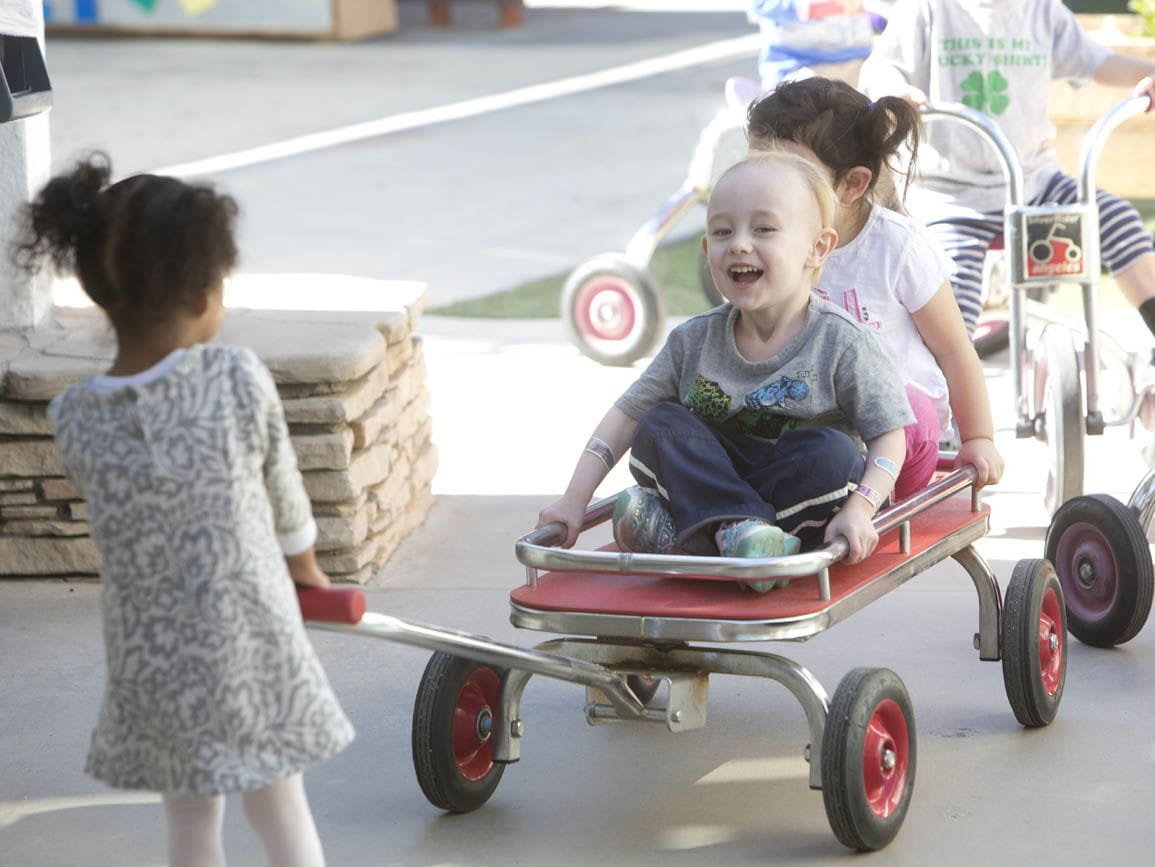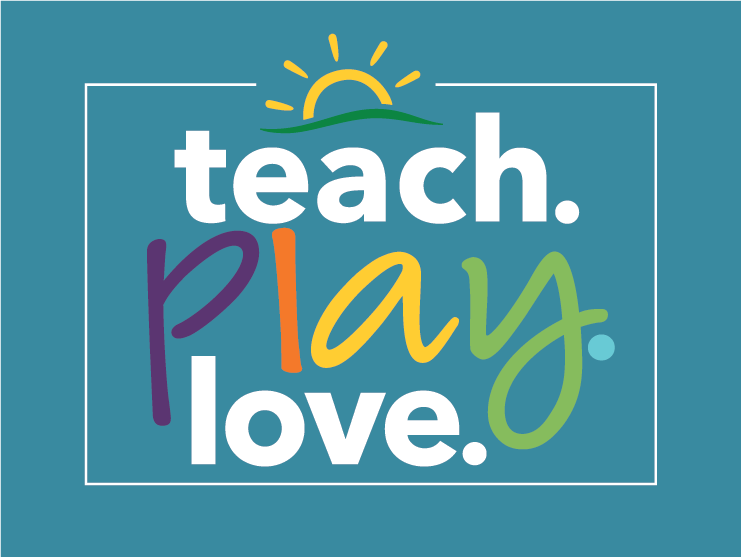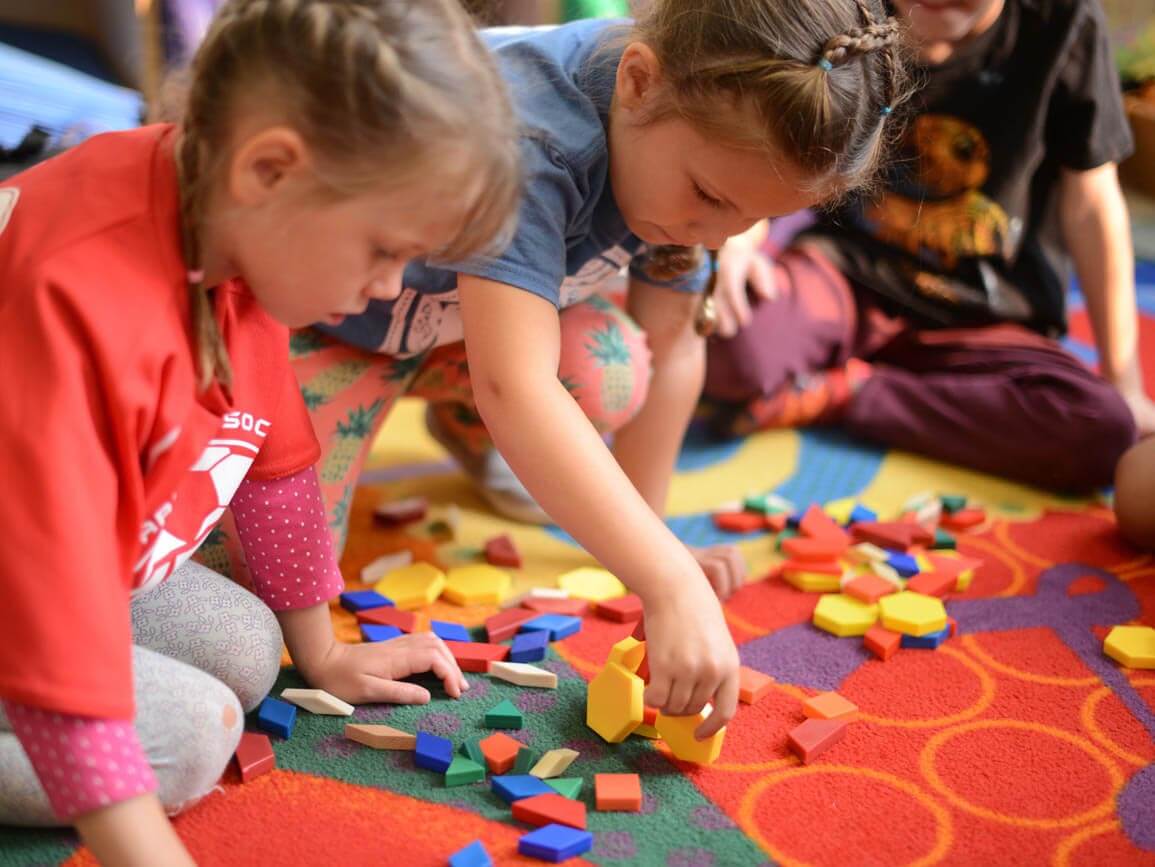One of the most challenging aspects of parenting is knowing when to give a child more independence and when to set limits.
We live in a culture that often protects children from risk, but is that always healthy or helpful?
Before discussing the benefits of risk taking, it is important to note the difference between risk and hazard.
In early childhood, and as we refer to it in this article, a risk is viewed as a challenge or uncertainty that a child recognizes in their environment before they determine whether to engage with it or not.
Alternatively, a hazard is a danger in the environment that is beyond a child’s understanding, and interacting with it can result in severe injury or endangerment.
How does risk taking benefit children?
Taking risks in a safe environment builds confidence and teaches valuable life skills, including cognitive, physical and social emotional skills.
Independence, risk-assessment, and positive stress are just a few of the skills children develop during risky play opportunities.
You may ask yourself, “What is positive stress?”
This occurs when children face a challenge, and consequently, they experience a growth-promoting moment. This kind of stress prompts a child to prepare and focus, motivates them to try new things, and encourages them to reach for their goals.
While taking healthy risks, children also learn self-regulation when they ask questions like “how high is too high in this tree?” or “how fast can I ride my bike and still stop quickly?”
These moments also help build your relationship with your children. When giving them an appropriate level of independence, it sends the message, “I trust you.”
When your child takes risks, it also helps you see areas where they might need additional guidance or support.
Encouraging healthy risk-taking behavior
Need some guidance on how to negotiate a healthy balance of risk and safety with your child? These simple strategies will provide opportunities for healthy risk-taking.Analyze the risk vs. benefits
Two good questions to ask when deciding if an activity is appropriate for your child are, “what’s the worst thing that could happen?” and “what’s the best thing that could happen?”
As parents, we sometimes make decisions based on fear, rather than reality.
Asking ourselves these questions and being aware of our relationship with risk can help us be more objective.
Consider your child
Children develop at their own paces. What might be completely appropriate for one child might not be for another child.
Consider your child’s level of mastery with motor skills when deciding about, say, a tricycle or playground equipment.
Examine an elementary-aged child’s ability to follow directions, understand consequences, and make reasonable choices when thinking about whether your child is ready for activities such as walking to school alone, or spending the night at a friend’s house.
Assess the environment
Our world has become much smaller with the increase in social media and digital communication, yet the environments we live in still vary widely. It’s important to be aware of the realities of our own particular communities—like crime rate, traffic, and overall safety—and base our decisions on those truths.
Teach skills and set limits
Restricting children’s opportunities limits their growth.
And yet, allowing them too much freedom too soon leaves them unprepared for potential challenges.
Break downing activities down by skill is a helpful strategy to bridge the gap between too little and too much freedom.
For example, before you allow a child to climb trees, spend time climbing playground structures. Then, when your child is ready to explore a tree, show her how to choose trees with low-lying branches and how to identify limbs and branches that will support your child.
Anticipating the challenges your child might experience and the necessary skills ahead of time will help them develop those skills for later use.
It is important to mention here that just as children develop at their own rates, each child’s relationship with risk is also different. Some children are natural risk takers and need support to slow down and assess safety while others need encouragement to take any risk at all.
Practice together
As you practice challenging activities together, slowly give more freedom in incremental steps.
In general, by high school, children should be able to do their own shopping and get from place to place safely. Reaching this point happens gradually.
When children are young, we take them grocery shopping with us and talk about what we’re doing. As a child reaches late elementary age, we might give them a few dollars and allow them to find something in the store. We might ask a middle-schooler to go into a store independently to buy a few items. In this slow, incremental way, children learn the skills they need gradually while we’re available to supervise and offer correction.
Is risk taking healthy or helpful?
Yes!
As parents, your best strategy is to find a balance between overprotectiveness and nonchalance.
That middle ground allows children to try new things, make mistakes, and solve problems within a safe structure. Finding that balance gives them the best chance to learn the essential skills they’ll need for adulthood.



